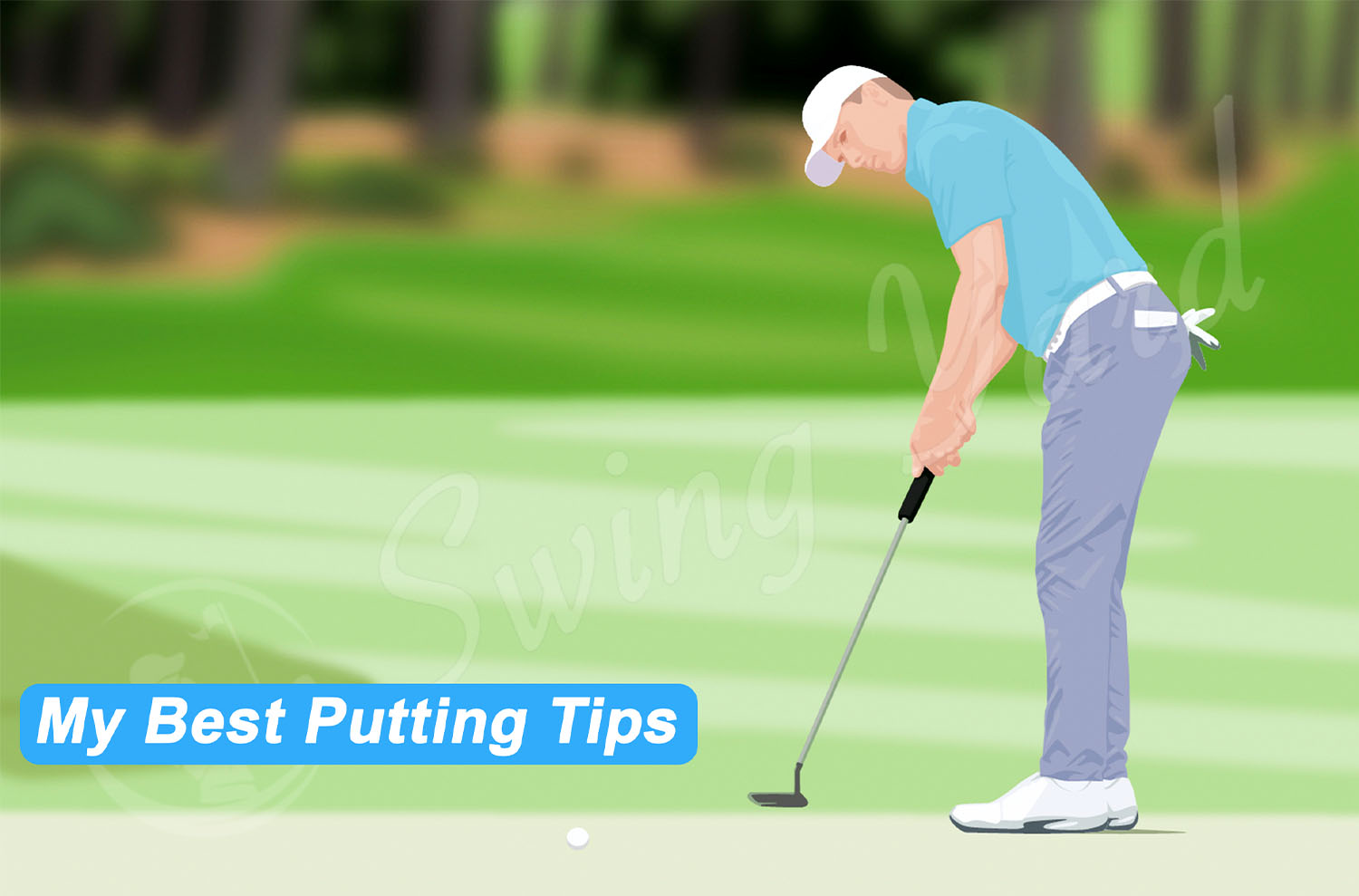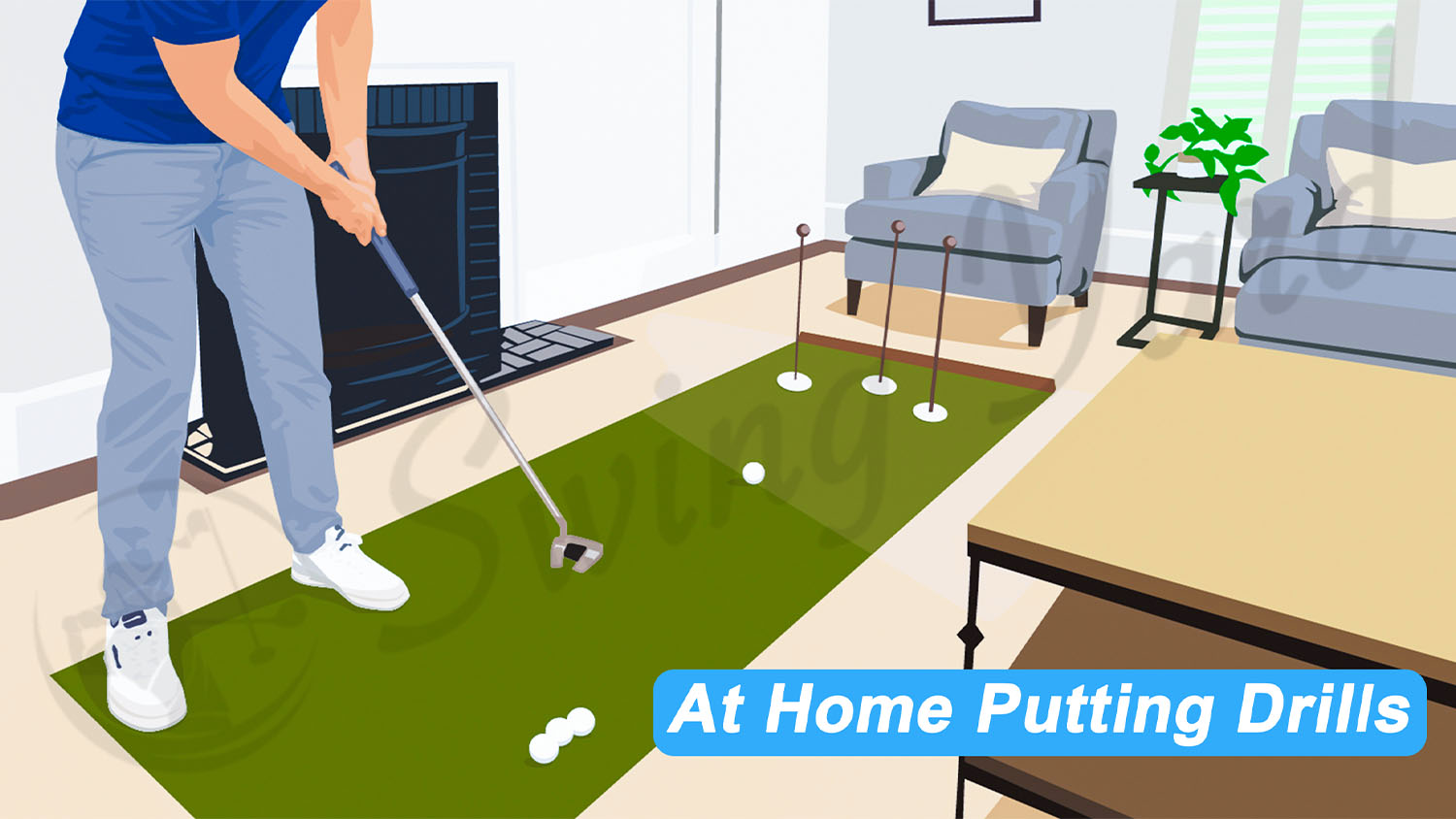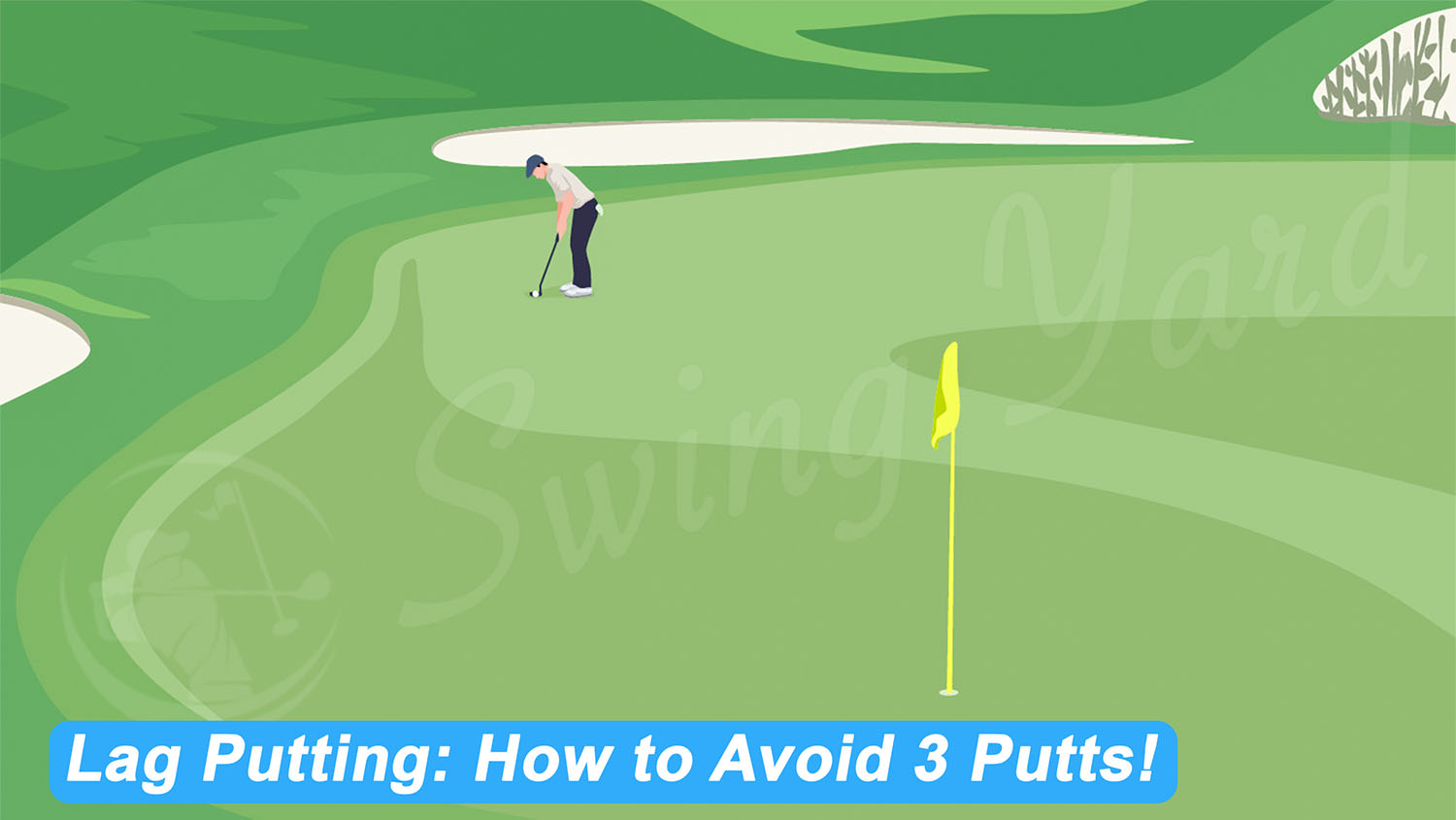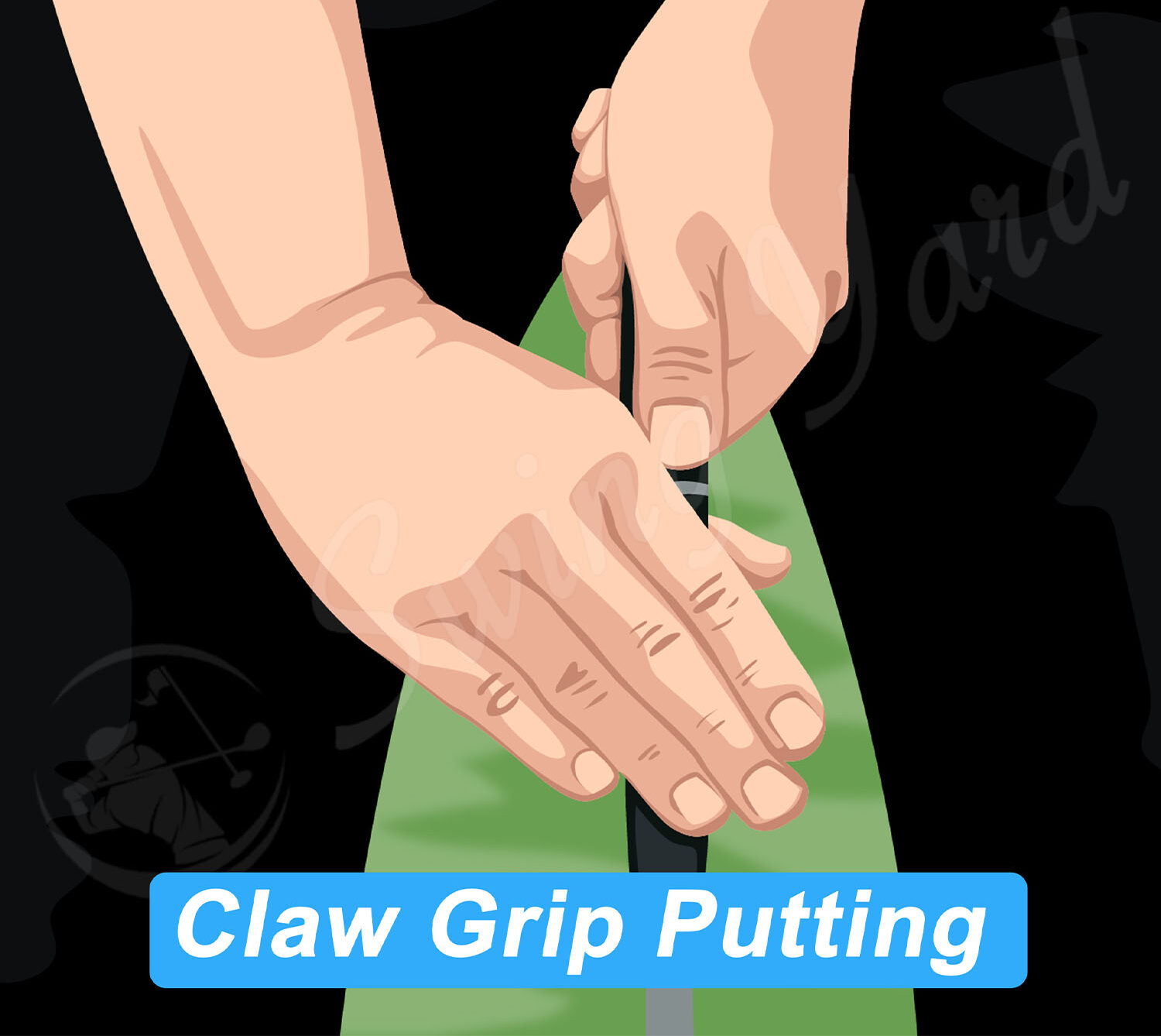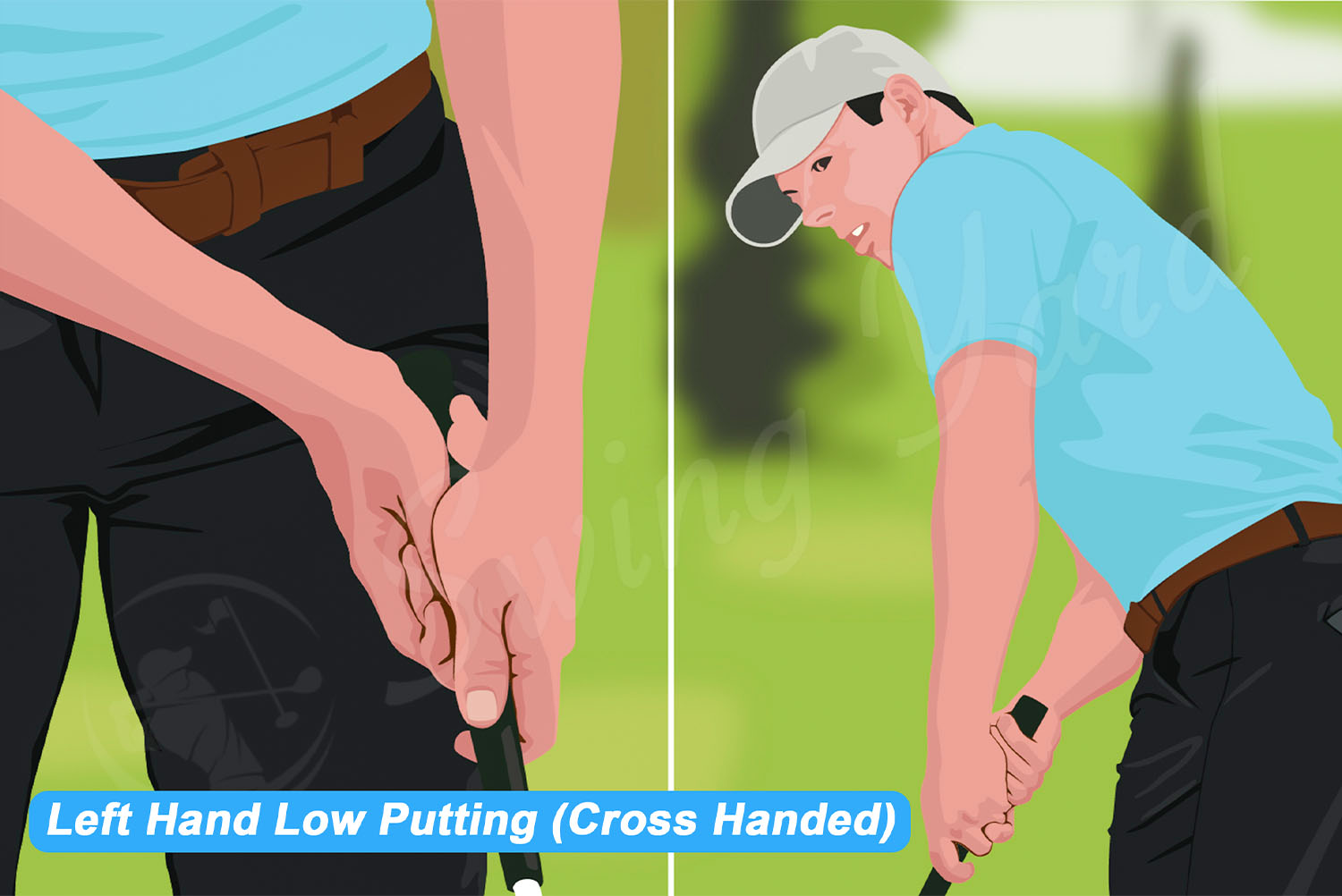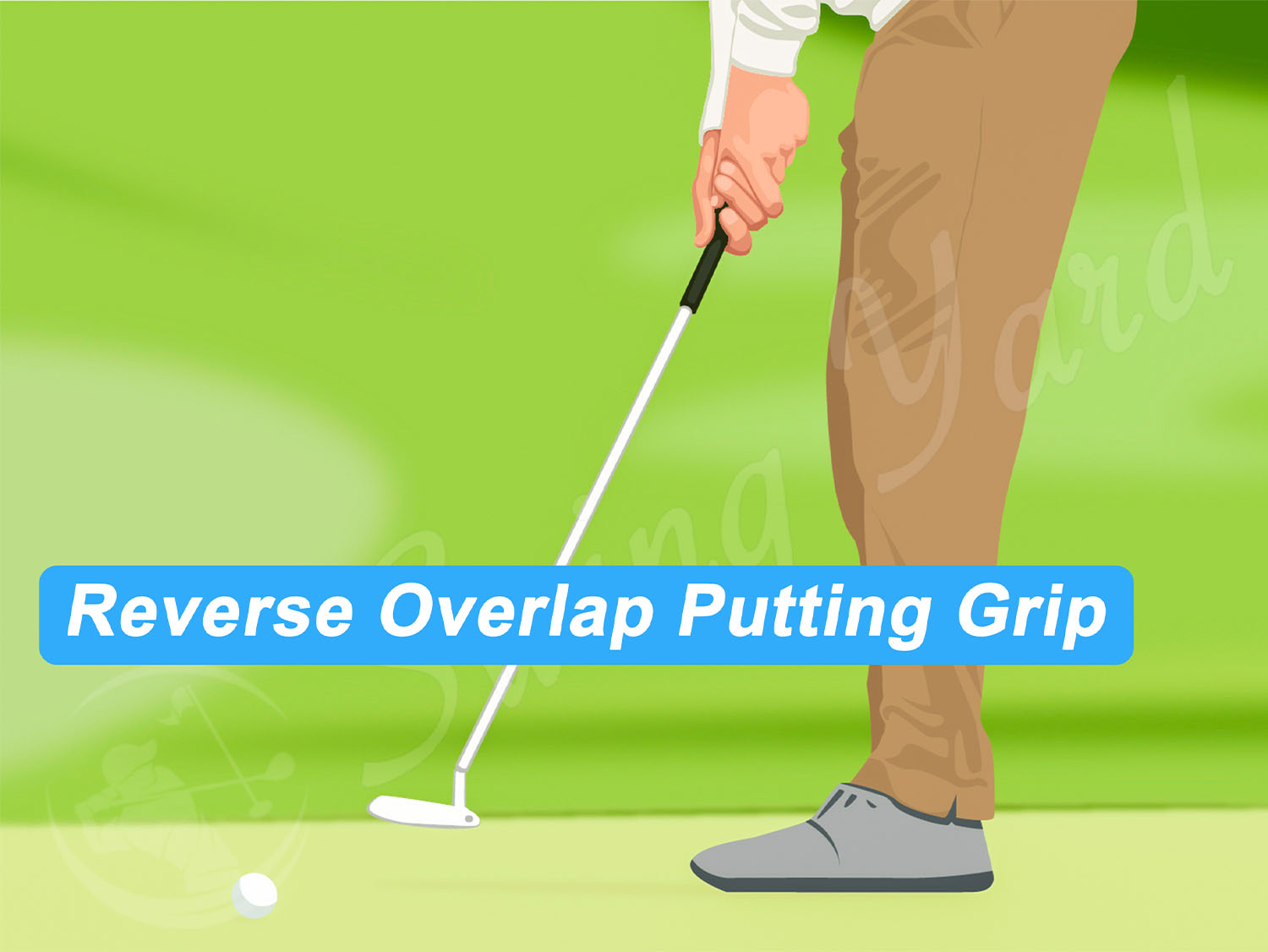7 Different Putting Grip Styles (With Pictures)
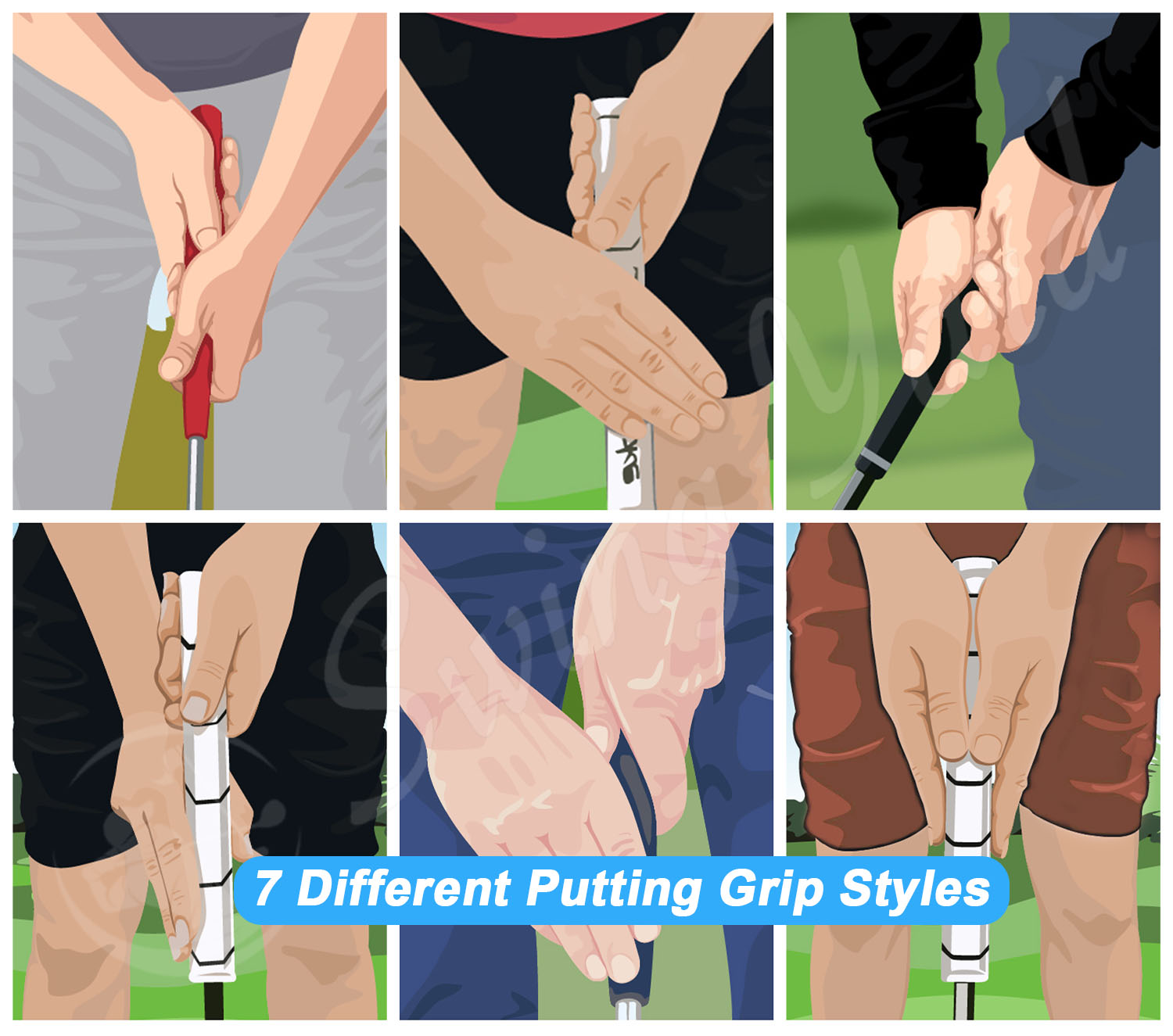
By Coach Erik Schjolberg – Sep 6, 2023
Contents
There are about seven different putting grip styles ranging from the arm lock grip to the most common reverse overlap grip. If you are wondering which of these grips could be for you, and how you can get your golf game to the next level using these different putting grip styles, I’ve got you covered.
Key Takeaways – How to Hold a Putter in Golf
- The putter grip you choose is mostly a decision based on personal preference, but there are benefits to your putting stroke when choosing the right one.
- The most common putting grips are left hand low and reverse overlap.
- Always change putting grip styles on the practice green; the process can be slightly inconsistent at first.
What Are The Different Putter Grip Styles?
The common putting grips include arm lock putting grip, reverse overlap grip, left hand low, claw grip, saw, pencil, and prayer. Some of these are really simple to do when trying to get your hands in the right position; others take a little bit of time.
Claw Grip Putting Style
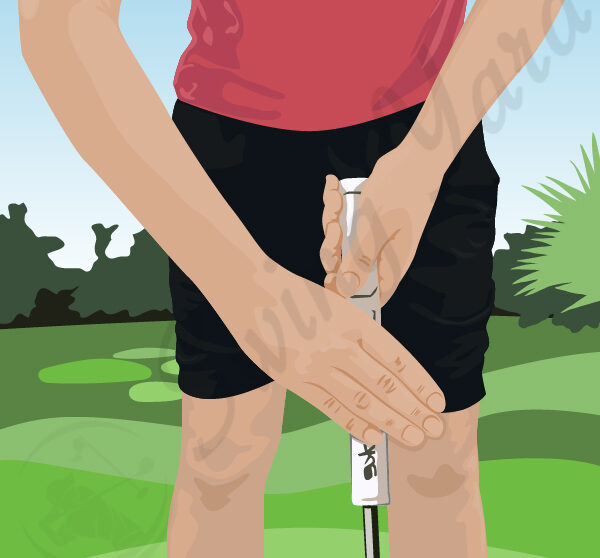

The claw grip putting was made popular by Chris DiMarco. If you followed golf when DiMarco was big on the PGA Tour, his grip made people start to question how they were holding the golf club. The claw grip still is popular, even after all these years.
The basics of the claw grip are a little complicated because you don’t have exact guidelines for how your hands need to be. The basic premise is that your left hand is in the standard position at the top, and the right hand holds the club between the thumb and forefinger.
The trick here is that the palm of your right hand faces your waist. This is not standard and really made the first impressions of the claw grip a little eye-opening. The claw putting grip does a great job of keeping the putter on the path; once you get used to it.
Left Hand Low Putting Grip
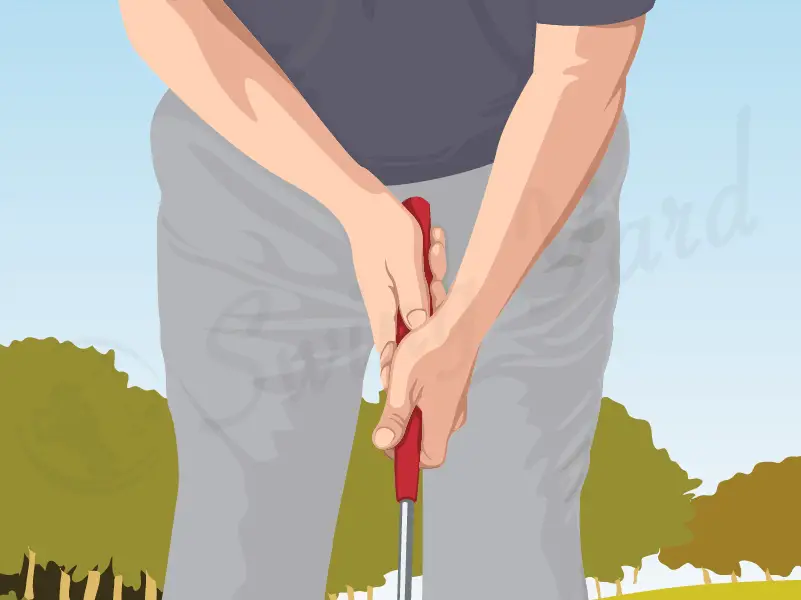

Although I don’t use the left hand low putting grip, it is one of my favorites. Every time I use this putting grip style on short putts it feels so accurate to me. When it comes to the longer putts, or lag putting (explained here), I’ve never been able to implement them properly.
The best thing about the left hand low putting grip is that your hands are no longer the active player in your putting stroke. Once the left hand is lower than the right hand you will engage your shoulders more.
For golfers that struggle with letting the wrists take over, there is probably quite a bit of inconsistency in your putting stroke; the left hand low style can fix that.
I like the left hand low grip for those that are new to the game and players that struggle with making short putts.
Reverse Overlap Putting Grip
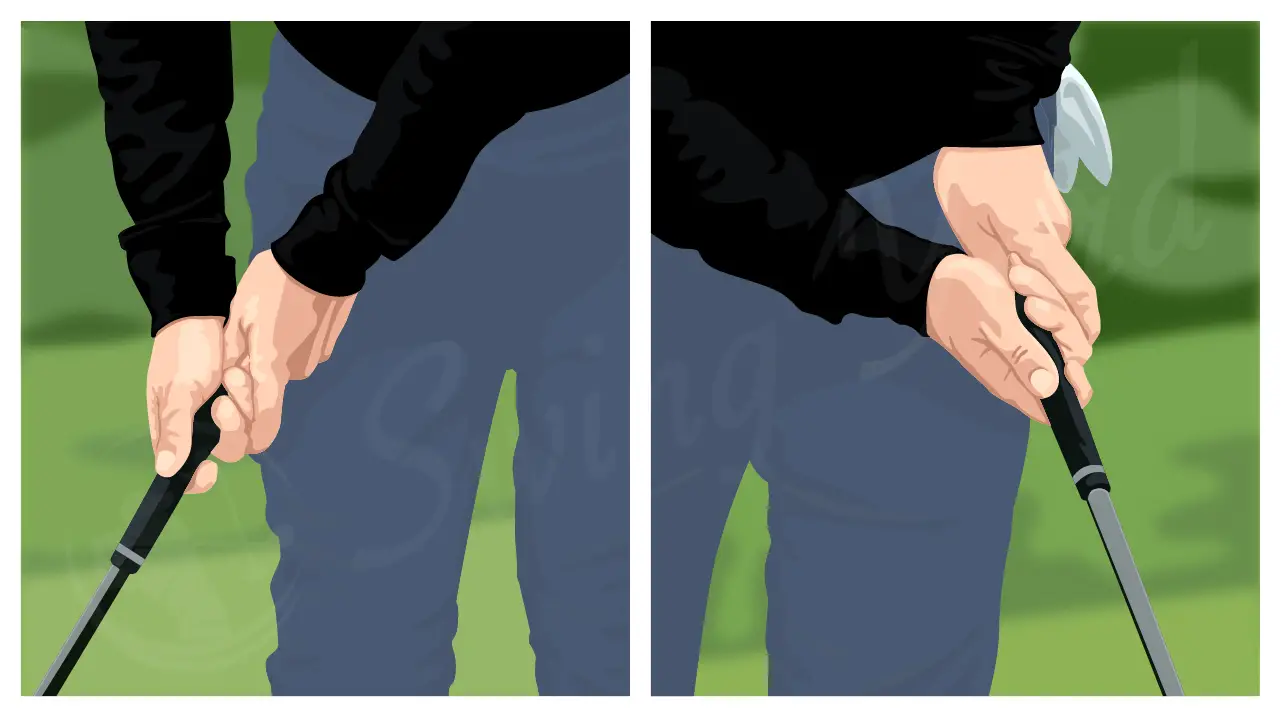

The reverse overlap putting grip is often referred to as a conventional putting grip. If you currently grip your golf club with an overlap style grip, the reverse overlap could be a great choice to consider.
Instead of overlapping your fingers where the right pinky is over the left index finger, you will reverse that. The left index finger is placed across the fingers on your right hand.
One of the things that help players choose the reverse overlap and eventually use it in their game is the similarity to a standard putting grip. This feels close to a traditional putting grip, and you won’t feel as though you are learning something entirely new.
Many golfers with arc-style strokes also feel as though the lighter hand pressure of the reverse overlap allows for a better release of the putter head.
Saw Putting Grip
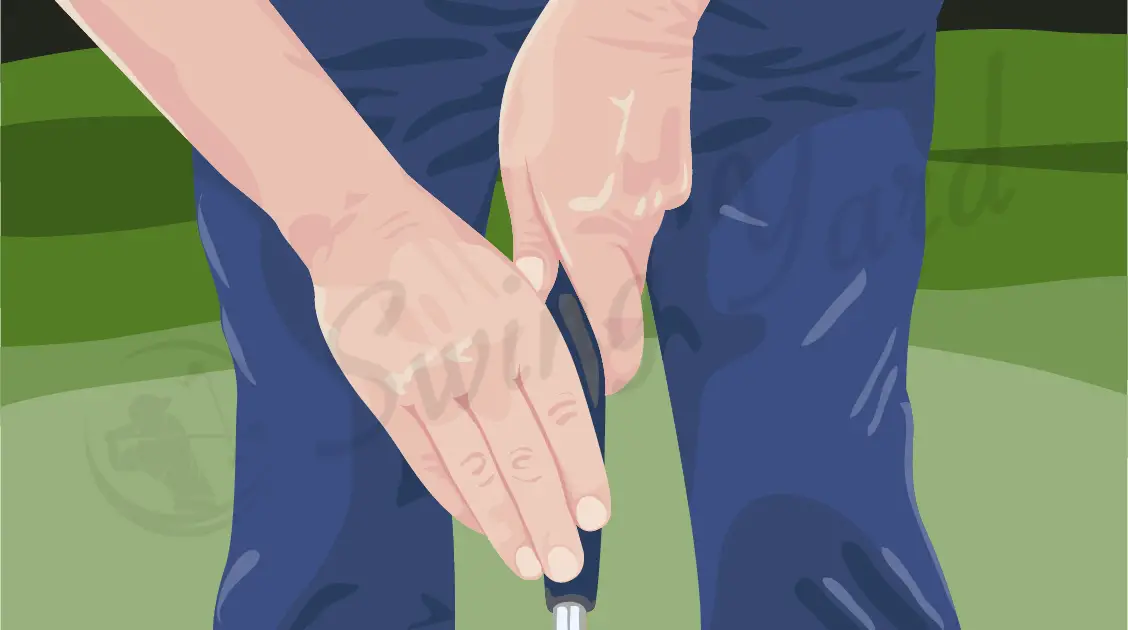

The saw putting grip can look very similar to the claw. Essentially you will still have your left hand to grip the top of the putter, and the right hand becomes the guide. Some golfers will have their hand in the exact same spot they would with the claw, and others have the fingers more across.
With the saw grip, your thumb will go under and around the putter grip with your fingers growing across the front of the grip. With the saw grip, your right hand almost resembles the saw that looks like it’s cutting the club.
Pencil Putting Grip Style
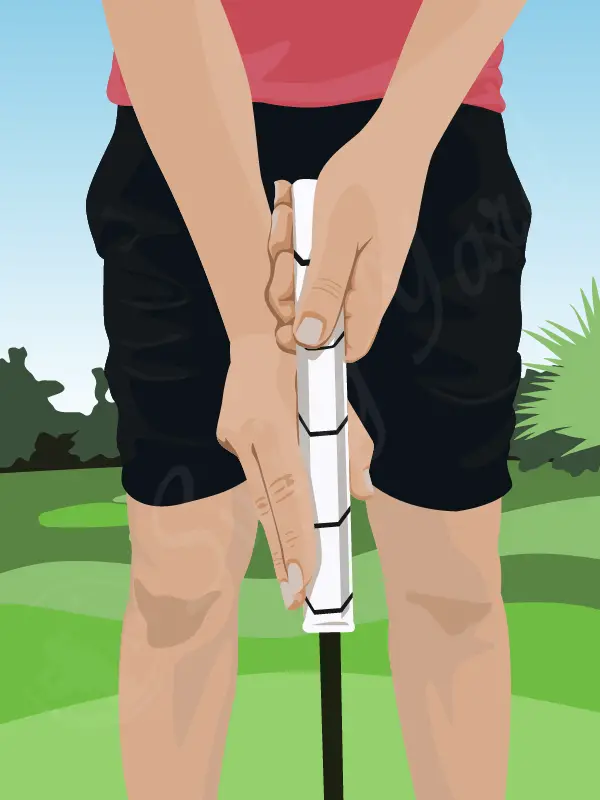

The pencil putting grip is a newer style that some will say is in the same family as the claw. The pencil uses the left hand on the top of the club, and the right hand sits on the edge of the grip. Essentially the thumb wraps around the back, but the fingers go down the side of the club.
With this putter grip style, I always feel like the putter handle is almost entirely controlled by my left arm. Not a bad thing for those that have issues with the dominant hand taking over on those shorter putts.
Arm Lock Putter Grip
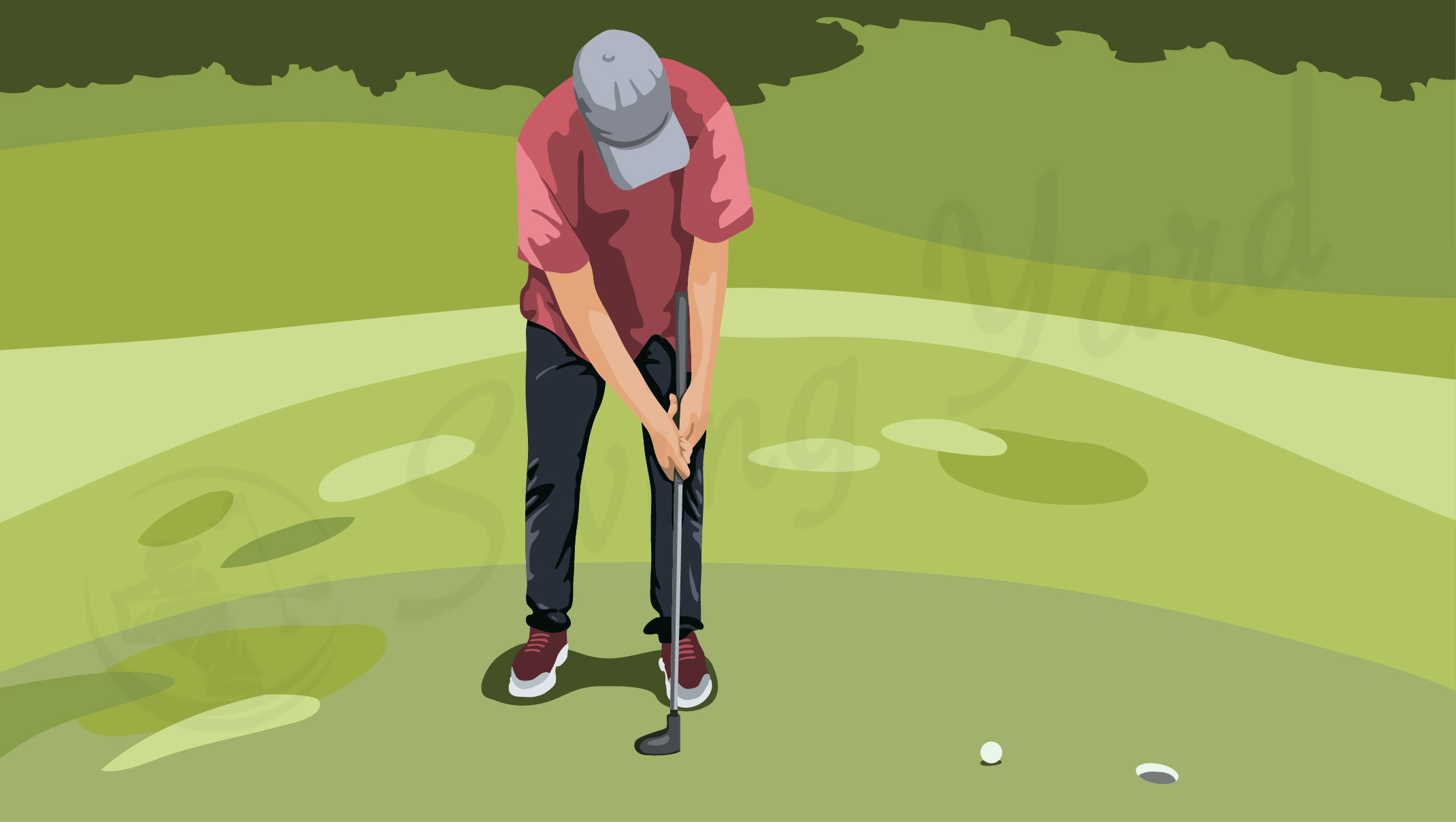

The arm lock putting technique is to help golfers that are struggling with too much wrist hinge or movement in their game. The right handed golfer will use an extended putter with a longer grip and hold their left hand very far down the club.
This is a cross handed grip with the left hand low.
The right hand can hold onto the left hand in the normal reverse overlap style, or some golfers will use the right hand to hold the butt end of the putter and keep the club almost attached to the arm. The arm lock putter grip can sometimes be a mix of a conventional grip and a non standard grip style.
Prayer Putting Grip
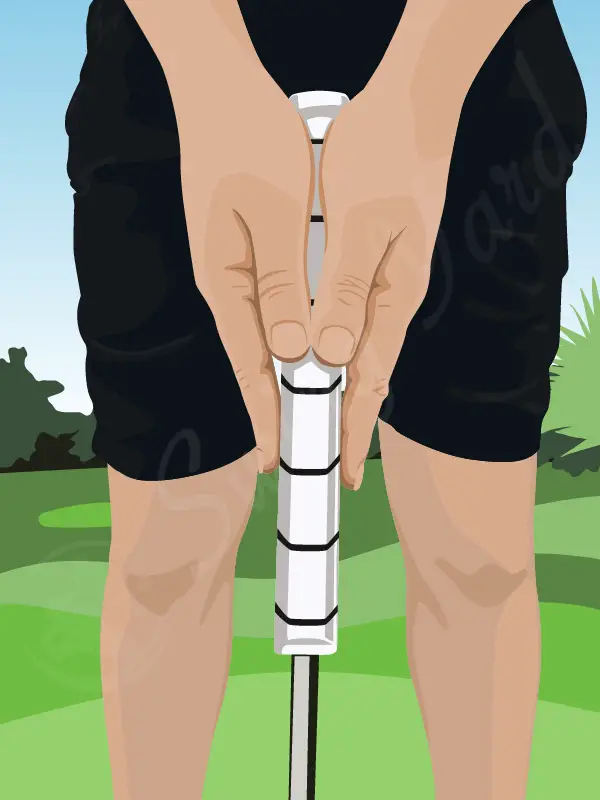

If you aren’t sure if you like the left or right hand low, why not put both hands on the club so they can face each other? The prayer putting grip is anything but a normal grip. Your hands will face each other with the right thumb and left thumb running next to each other down the center of the putter grip.
The index finger will then extend down the putter shaft. The prayer grip is very stable, and many find that it works well with an oversized grip.
Homemade Putting Grip
Yes, you read that right, a homemade putting grip. Is this possible? Can you grip the putter in a way that just makes sense to you?
Absolutely!
If you find that the reverse overlap grip is a great choice for you, but your left thumb or index finger just doesn’t feel right, feel free to change it. Learning how to grip a putter is all about trying to deliver the face of the putter square to the target each time.
If this takes a unique putting grip, it’s certainly within the rules of the game to do so.
How to Grip a Putter – Which Style is Best for You?
Now that you better understand the different putting grips, it’s time to decide which one is for your game. Here are the ways I recommend choosing a putting grip style to help you learn how to grip the putter properly.
Examine The Current Weakness In Your Game
Take a look at your current putting stroke and putting game and determine what the weaknesses are. Some golfers struggle with things like distance control; others have alignment issues or problems delivering the face square. Start with these putting tips to find your weaknesses.
Each of the putting grip styles that we discussed has some benefits when it comes to your putting stroke. One of them may stand out as the overall best choice. If a grip can give you more stability or lighter grip pressure, it could be an option that will help lower your scores.
Try Each Grip On The Putting Green
There is nothing wrong with experimenting with each of these putting grips on a practice green to see which one you benefit from the most. You can even work on the stroke with a new grip by doing some putting drills at home.
I would never change my putting grip in the middle of a round unless I had tried the position before. Instead, schedule an hour to go to the putting green and try out each of the putting grips.
Chances are, one of them is going to stand out as the best overall. In the end, your full swing grip could be your best choice, which is entirely acceptable.
It Has To Feel Comfortable
I had a friend that played with the claw grip, and he played well with it. I remember saying that I wanted to try it, and he showed me how to get my hands in the right position.
It was way off.
I never felt like I could control the club. I’m not sure if my hands were too small or my brain just didn’t like it, but it was awful. I know I could have eventually learned to grip the putter like this, but there was no point in that. It made sense to choose to move on to the next option (or in retrospect, I could’ve tried experimenting with one of the different styles of putters).
Experiment With Video/Stats
Golf technology can help you decide which of the putter grip styles is right for you. Take some video of your current putting stroke. Down the line and face on video are helpful. You don’t even need to be at the course to do this – a home or office putting set up works great for filming video of your stroke.
Once you have the video in place, you can then look at which of the putter grips helps to deliver the putter in the best position.
If you want to keep it low-tech, pick a hole that is about 8 to 10 feet away from you. Setup with your current putting grip and try to make ten putts. Then change your grip and try to make ten. What are the results like? Which putter grip has the better stats?
Bonus Tip
After watching the video, determine if you have a straight back straight through stroke or an arc stroke. You could just need to switch to either a mallet or blade putter. Read my article here to determine which one is more aligned with your style.
FAQ
Here are a few of the most commonly asked questions about the best putting grip style. I’ll warn you, once you start looking into putting grips in this way, you are going to be looking at all your friends and the PGA Tour players to see how they hold their putter!
What is the best grip for putting?
Although the reverse overlap putting grip is often considered the best option, there are plenty of other ways to grip a putter. Golfers must choose something that is both accurate and repeatable.
Should you interlock fingers when putting?
Interlocking fingers on a putting grip is not as popular as the overlap. The problem with interlocking is that it can bring about some added grip pressure that is not necessary for the putting stroke.
Should you grip the putter loosely?
Throughout each of our descriptions of the best putting grip options, you will notice that a common theme is to grip the putter loosely. If you grip the putter with too much pressure, you could restrict the clubhead from rotating properly.
What is a normal putting grip?
Most golfers refer to the normal putting grip as the reverse overlap. The full-swing grip transferring to the putting green is not as common as a golfer changing their hands around a bit and using something like the reverse overlap.
Is there a proper putter grip?
There isn’t a defined proper putting grip per se, any of the putting grip styles we discussed in this article will work just fine. The key is finding one that you feel comfortable and CONFIDENT with. The proper putter grip is the one that works best for you.
Final Thoughts – Putting Grip Styles
I think we have covered everything there is to know about how to hold a putter in golf. Remember that if you choose one of these grips and all of a sudden your left index finger, your wrist, or your forearm suddenly feels out of place, change the grip.
As we often find with golf, there is no perfect way to grip a putter, and therefore you have to just find the one that is right for you.



